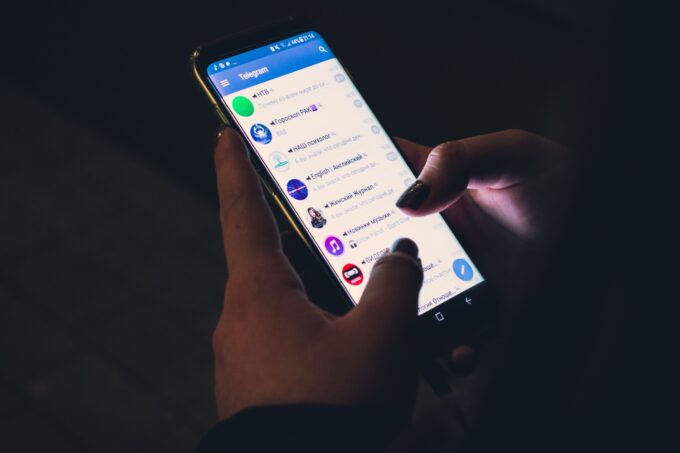Are you unsure about how to handle incoming business calls? Do you always feel like it’s impossible to cover all your bases? Perhaps you’re losing money fast because of those missed opportunities.
If any (or all!) of those sounds familiar, it’s advisable to look for a solution to your business’ call productivity issues. After all, making the most of your incoming calls will have a huge impact on the success of your business in the long run.
What Is Business Call Productivity?

Source: talkdesk.com
Many organizations are beginning to focus their efforts on call productivity, but what is it exactly?
Call productivity refers to the efficiency of each call that a customer service representative (CSR) engages in. One of the metrics used to measure this efficiency is average handle time. Others include first call resolution rate, hang up or abandonment rate, and average minutes per call.
Every CSR has a personal productivity number (PPN), which is the amount of time it takes for them to complete one sale or service on their own without assistance. The PPN should be used as the baseline to set performance goals. For example, if an agent’s PPN is 20 seconds, they should try to not exceed 20 seconds on each call.
Below are the three most common types of call productivity metrics in better detail.
- Average Handle Time (AHT): This is the average time a CSR spends per call. It’s calculated by taking the total duration of calls and dividing that by the number of calls made. This rate is often used as a benchmark and goal point to set the standard for average CSR performance.
- First Call Resolution (FCR): This refers to the percentage of calls that result in the problem being solved the first time it’s brought up by the customer, with no additional contact necessary. FCR shows how effective your agents are at handling phone calls. The best way to improve this rate is for a CSR to quickly gather information from the customer and have clearly defined next steps available.
- Hang Up Or Abandonment Rate: This is the percentage of all calls that result in customers hanging up or abandoning their call before talking to a representative. It represents failed attempts by customers to contact the company or speak with a CSR. It’s important to have a low hang up rate because it’d show that customers are able to easily find your business contact information, which leads to higher call volumes for you.
With so many different metrics being used to monitor call productivity, companies have found it difficult to implement a consistent standard across their departments and teams. Since every business is unique, it’s important to find the metric that works best with your CSRs. It should be simple enough for them to understand what’s expected of them but detailed enough to show if they’re meeting their goals. Finding the golden mean among the metrics will help ensure higher call volumes and increased revenue.
Why You Should Bump Up Your Business’ Call Productivity

Source: rankminer.com
Whether or not your business’ call productivity is high enough is a big deal. If all or most of your customer service is to be handled via email (because it seems easier than setting up a phone system), then you might be in for a great disappointment.
A lot of work has been done researching customer service and sales reps’ interactions with their email inboxes (how productive they are when using their personal email). Research indicates that being overwhelmed by emails resulted in lower levels of enlightenment about an issue or problem, which limited problem-solving abilities. This decrease in creativity likely led to a decrease in call productivity as well since it’s the result of reduced activities to create or discover opportunities for revenue growth.
Many studies have found that increasing call productivity can lead directly to higher profits because it’ll raise the number of contacts made by your employees. Human resources (HR) experts also recommend boosting call productivity because this’ll lead to better customer experiences.
While it’s true that some people are more comfortable with email than they are talking on the phone, communicating face-to-face with customers is still beneficial. Plus, employees who feel more at ease talking on the phone may have an easier time connecting with potential customers. This increased connection could really pay off in terms of sales if employees can persuade their customers to buy something.
The rise of automated call systems has led many people to worry about artificial intelligence (AI) taking their jobs away, but these concerns aren’t warranted. While new innovations like Alexa and Siri show promise in making digital communication easier, AI has very real limitations when it comes to important tasks like providing excellent customer care.
If the data doesn’t convince you to increase call productivity in your business, maybe the idea of more effective customer care will. After all, what would you rather have: a brilliant new email system, or an excellent way to talk directly with your customers? When it comes down to it, increasing call productivity is definitely beneficial. Here’s how you can accomplish just that:
1. Try To Answer On The First Ring

Source: ameridial.com
Sometimes, when your business phone rings, you might find that you’re busy and can’t answer the call at once. This is something that’ll cost your business in terms of customer relations and expenditures.
But there’s a simple solution: have someone else answer the phone for you, whether it’s a family member or somebody in another office near where you are. That way, it’ll be easy for the phone to be picked up on the first or second ring. As long as that person knows who you are and what your business does, you should be fine. Just make sure that whoever answers the phone can answer all of your clients’ questions completely and accurately.
2. Make Sure Your Phone System Includes An Auto Dialer
Make sure your business phone system has auto dialer software that’s cloud-based, like the one you’ll find when you visit this site, to help you automatically get in touch with new and existing customers alike. This can be a seamless way to create new business and maintain it. Your auto dialer will dial numbers automatically, and as soon as they successfully connect, it’ll play a message that’s already saved in the system, or it’ll send the call through to a live attendant.
What should the pre-recorded message say? It depends on what your business does and who your customers are. If you’ve got a retail store, for example, your greeting might state something like ‘Thank you for calling [business name]. Our business hours are from 9:00 am to 6:00 pm, from Monday to Saturday. If you need assistance, please press 1; if you’d like to make a purchase using your credit card, please press 2; if you have questions about our products or services, please press 3.’
For an insurance agency, the message can be something to this effect: ‘Thank you for calling [name of insurance company]. We’re open from 8:30 am to 5:00 pm, and we’d be happy to assist you with any insurance-related questions you may have. For medical policies, please press 1; for life plans, please press 2; for property or liability claims, please press 3.’
With prerecorded messages, clients won’t be left hanging if you can’t attend to their call right away.
3. Develop A Phone Contact System That Is Organized By Client Category
A phone system such as this allows your business contacts to be divided up efficiently by category (e.g., clients versus suppliers versus prospects), so it’s easy for everyone who interacts with the business over the telephone to find the appropriate people within their areas of practice. This can save a lot of time when you’re trying to contact someone who’s familiar with specific activities or products.
4. Give Someone The Job Of Taking Phone Messages

Source: itechpost.com
Improving the level of a business’ call productivity takes a lot of strategizing and consistency. One key thing you should do in order to eliminate confusion and unexecuted tasks is to make sure there’s a specific person who takes down client messages that need to be attended to within the day or beyond that. That way, no to-do task gets lost in the midst of things.
When someone calls your business and leaves a message, you need to make sure that the information they leave is accurate so it can be passed on to you in a timely manner. To prevent inaccurate messages, give one person the responsibility of writing down or typing up phone messages. You may want this person to regularly update an employee directory or call sheet that lists key contact telephone numbers for their department.
5. Set Standard Operating Procedures For Telephone Communications By Department
To keep all of your employees communicating consistently with customers over the telephone, set standard operating procedures (SOPs) by department or division. Make sure everyone understands what’s expected of them when they answer a business call.
Every SOP should answer questions such as the following:
- What information should be given over the telephone?
- How quickly should the requested information be communicated?
- Who’s responsible for handling a particular type of call or client category?
- When and how should follow-up calls be made if needed?
6. Teach All Staff Members About Telephone Etiquette
Business phone interactions can turn sour very easily, especially when one party doesn’t know what to do or say. Make sure your staff members know how to properly answer, screen, and transfer business calls so they can improve their chances of converting prospective clients into paying customers.
7. Ask Customers To Call Back If They Fail To Reach Anyone

Source: thebalancecareers.com
Many people will give up trying to contact your company by phone after a couple of tries because it’s just too frustrating. To avoid this, teach your employees to always ask customers to call again if they’re unable to reach anyone right away the next time they contact your business. If they’re trying to get a hold of you or someone else in the company, there’s a good chance that one of them will give up after a few attempts. Such individuals would need to be encouraged and assured that someone will be there to answer their call.
8. Train Your Staff Members To Treat Every Business Call As Important
When you have an employee who’s friendly and efficient on the telephone, it really does make a difference to your business. Not only do these employees create a good first impression with prospective clients, but they also increase the likelihood of converting those leads into paying customers.
9. Set A Goal: How Many Calls Should Be Answered Within X Seconds?
It’s all well and good to want your business telephone system to be up and running all the time, but if no one’s answering the calls from prospective customers, what’s the point? Setting a goal of how many calls should be answered within a particular number of seconds will ensure that you’re achieving the best call productivity possible 24/7.
10. Ensure That All Calls Made To A Business Are Authentic And Verifiable

Source: salesforce.com
Caller ID has made it easy for people with bad intentions (e.g., salespeople trying to increase their sales) to make it look like they’re calling from another company’s telephone number. This can lead to serious legal problems for businesses. So make sure that only authorized staff members are able to make outgoing calls on behalf of your company by checking whether all calls made to clients or other businesses are authentic and verifiable.
11. Implement A Call Traceability Feature In Your Phone System
When a customer feels like they aren’t being listened to properly on the phone, it can be very hard to clear up the issue because of the inconvenience of having to go back and forth between departments (e.g., between billing and sales).
To avoid this scenario, implement a call traceability feature in your phone system that shows how to navigate between different departments as easily as possible.
12. Teach Your Employees To Transfer Calls Properly
A call transfer from one department to another is deemed successful when both parties end up speaking with the right person. But what happens when it’s botched? The customer gets frustrated, and the whole business suffers. To avoid this problem in your own organization, teach your employees to transfer calls correctly.
Conclusion
With these quick and simple tips, there’s no excuse not to boost call productivity so as to better serve customers and increase sales. These changes have been known to turn businesses around when put into practice by management teams all over the world, so why wait to implement them? Pick up the phone today!







